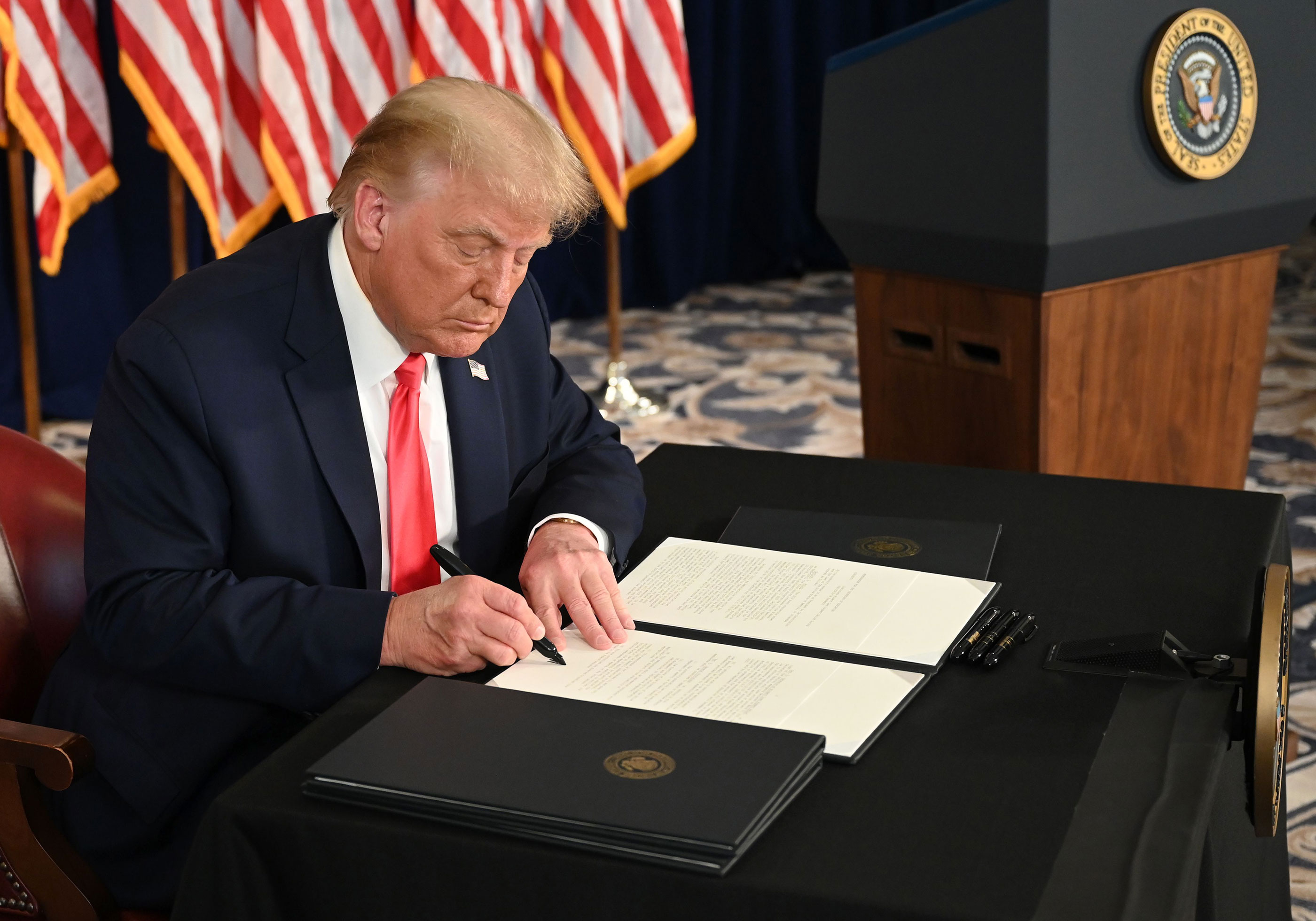Latest news from around the world

With stimulus talks stalled, President Trump announced he would go around Congress to deliver aid to Americans affected by the pandemic.
While the House remains out, both members of the House and Senate have been told to be ready to return to Washington, DC should a deal be reached. The Senate is set to convene today at 3 p.m. ET.
A close read of the actual text of executive actions Trump signed Saturday suggests that even if they are deemed constitutional, they will not quickly deliver the aid Trump promised. They may not deliver much at all.
Here’s a breakdown of the actions, the many strings attached and questions about what they actually accomplish.
Trump described the memorandum signed Saturday as an action providing “an additional or extra $400 a week and expanded benefits.”
But in reality, the additional unemployment aid is more complicated than the White House acknowledged and experts say it may not help a lot of the unemployed.
Now, under Trump’s measure, the federal government is requiring states to pick up the tab for 25% ($100) of the as much as $400 additional benefit each person may be able to receive weekly in additional aid. On top of that, a state must agree to enter into this financial agreement with the federal government for any unemployed person living there to get any of the additional benefits.
On Sunday night, Trump said he was open to allowing people to get the enhanced benefit without states picking up some of the cost. He said it was possible that the federal government could pick up the entire cost if governors make a request.
The executive action signed by Trump does not reinstate the previous moratorium on evictions, which lapsed in July. The original ban covered mortgages which were backed by federal funds. The nonprofit Urban Institute has estimated that moratorium covered just over 12 million households.
The new measure only states that “the Secretary of Health and Human Services and the Director of the CDC shall consider whether any measures temporarily halting residential evictions of any tenants for failure to pay rent are reasonably necessary to “prevent the further spread of COVID-19.”
The action calls for the Housing and Urban Development and Treasury secretaries to identify “any and all Federal funds to provide temporary financial assistance to renters and homeowners” who are “struggling” to pay their mortgages and rents because of the coronavirus.
Experts told CNN that it was unclear based on the process laid out for government agencies how long it would take for anyone to see funding from this.
The payroll tax measure that Trump signed Saturday does not actually reduce the payroll taxes. It defers the due date for the portion of those taxes paid by employees — 6.2% for Social Security and 1.45% for Medicare — through December 31. It applies to workers whose wages are less than $4,000 on a biweekly basis, or about $104,000 a year.
This is similar to Treasury’s deferring the federal income tax due date this year to July 15, from April 15.
You can read the full breakdown here.




